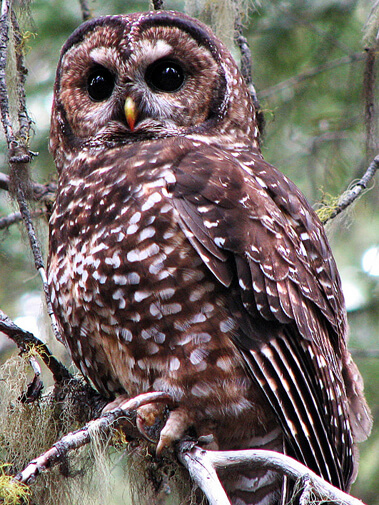Northern Spotted Owl Plan Calls for Additional Habitat Protection
MEDIA RELEASE
Contact: Steve Holmer, 202/234-7181 ext. 216,
 |
| Northern Spotted Owl by Chris Warren |
(Washington, D.C.,
“Additional habitat protection is needed to recover the Spotted Owl. We urge the Obama Administration to take quick action to preserve the remaining at-risk owl habitat,” said Steve Holmer, Senior Policy Advisor at American Bird Conservancy. “Protecting that old-growth forest habitat will also help the community and the nation by preserving both a world-class tourism destination and a sustainable recreation economy. A healthy forest also serves as a critical storehouse for heat-trapping greenhouse gases and a good source of drinking water for millions of people.”
The Recovery Plan will guide future management in the region, and could lead to changes in the overall Northwest Forest Plan. Critical Habitat for the owl will be designated under the Endangered Species Act in the coming year based on the modeling in the Recovery Plan.
The population of the Northern Spotted Owl is now thought to number fewer than 4,000 pairs, and is declining at a rate of 2.9% per year. The subspecies was listed under the Endangered Species Act in 1990.
“It is unfortunate that the Spotted Owl has been pushed this close to the brink due to the loss of 85% of its original habitat, and that logging of its habitat that still continues today on both public and private lands,” said Holmer. “It is clear that such an unsustainable path needs to come to an end and a new direction be taken that focuses on creating jobs by restoring owl habitat.”
The draft plan also calls for the experimental removal of Barred Owls to determine if reduced competition will benefit the Spotted Owl. FWS is expected to soon release a draft Environmental Impact Statement regarding the experimental removal. The Barred Owl, a thriving species originally limited to eastern North America, has invaded the Northwest due to land use changes across the Great Plains, and is now competing with the Spotted Owl for suitable habitats and putting further pressure on the threatened owl’s population.
“Conserving species threatened with extinction should be the priority. We will closely review the draft Environmental Impact Statement, and if a rigorous scientific protocol is proposed with verifiable benefit to Spotted Owl populations, we will support the experimental removal,” said Holmer.
Results of the Barred Owl experiment will be available in 3-5 years. At that time, the agency can then determine what long-term management protocol if any would be appropriate.


















































